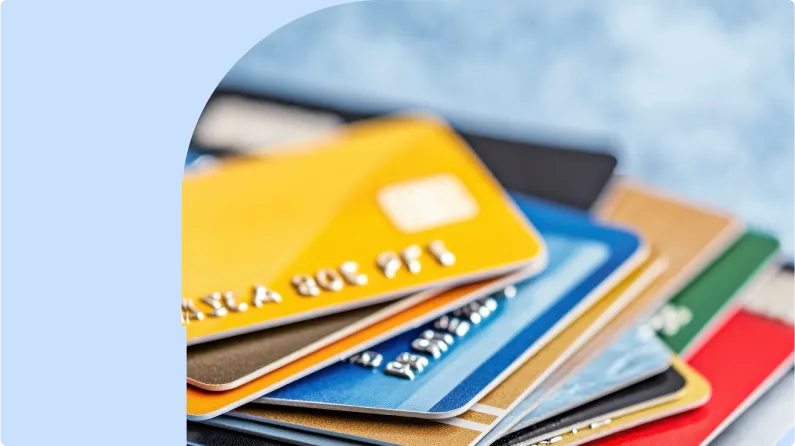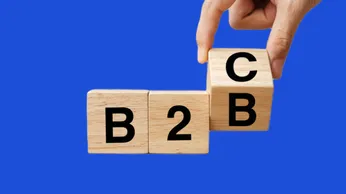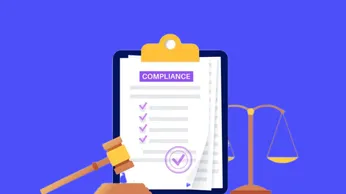How To Use Digital Gift Cards?
Digital gift cards offer instant, flexible, and hassle-free gifting for businesses. Whether for employee rewards, customer promotions, or sales incentives, they provide a seamless experience. Learn how to use them, their benefits, and why they’re the future of gifting.
On this page
Digital gift cards have transformed the way businesses reward and engage employees, customers, and partners. These instant, versatile, and easy-to-redeem gifts eliminate logistical hassles while offering recipients the freedom to choose what they truly value.
Whether used for workplace recognition, sales incentives, or customer loyalty programs, digital gift cards provide a seamless gifting experience that enhances relationships and drives engagement. Let’s explore how they work, their benefits, and why businesses are increasingly adopting them for smarter, more impactful gifting.
What are digital gift cards?
Digital gift cards are a convenient, instant alternative to physical cards, delivered via email or mobile wallets. Preloaded with a set value, they can be redeemed online or in-store at designated retailers.
Widely used for employee rewards, customer promotions, and incentives, they streamline gifting while enhancing engagement and loyalty. Virtual Visa, Mastercard, and Amex gift cards also function as prepaid debit cards, offering flexibility for various purchases.
Perfect for corporate gifting and cashback rewards, digital gift cards provide a seamless, hassle-free experience in today’s digital-first economy.
How to use digital gift cards?
Here is a step-by-step guide to using a digital gift card:
1. Find and purchase a digital gift card
- Locate your desired retailer’s online platform or store
- Visit the gift card section
- Choose the amount or package you want to buy
2. Choose your delivery option
- Select the desired delivery method:
- Email: Send a gift card via email with the recipient’s email address
- SMS (Text Message): Send a gift card via SMS with the recipient’s mobile number
- Digital wallet: Transfer a gift card to the recipient’s digital wallet, such as Apple Pay
3. Receiving and redeeming
- Email:
- Check your inbox for the gift card
- Click the provided link to access and print the gift card (optional)
- To use, enter the redemption code or card number, expiration date, and CVC
- SMS:
- Find and reply to the message
- Follow the same steps as above (access and print, redeem using code, expiration, and CVC)
- Digital wallet:
- Access your wallet’s digital gift card storage
- Find and view the gift card, using it to make an online purchase
Benefits of digital gift card for businesses
Everyone can! But we’re going to tell you about how you can use them in your business and the possible ways they can help achieve goals.
1. Employers to employees (rewards & recognition)
Digital gift cards make exciting rewards. While they have both ‘trophy’ and ‘halo’ values, their versatility allows for distribution at award ceremonies or special occasions like birthdays and anniversaries.
Since redemption is something that employees do personally, they can produce a halo effect as employees are reminded of their achievements each time, they think of how they will redeem them.
The opportunity to share the experience with near and dear ones adds to its trophy value, and the unexpectedness of receipt makes them special rewards.
Here are some situations in which you can use digital gift cards for your employees:
- Employee onboarding: Gift cards can be a thoughtful way of welcoming an employee into the fold when hiring. Giving gift cards (for desk accessories, stationery items, and meal coupons) not only gives new employees the freedom to choose from their favorite brands but also makes them feel more welcome.
- As a token of expression of care: Research has shown that gift cards lead to healthier outcomes in employee wellness programs. A study concluded that people who selected gift cards from an array of rewards offered were approximately 25% more likely to complete a wellness challenge than the other participants, holding other relevant factors constant.
- For employee appraisal and promotions: A promotion is a milestone to be acknowledged. A gift card for a newly promoted employee to celebrate the raise with the family, gift cards to high-end stores, or even gift cards for electronics that would help with work efficiency are ideas.
- Employee retirement: What better way to say thank you for your service than by giving employees gift cards than to give an employee something timeless that would remind them of the times spent at the workplace?
2. Employers to motivate sales teams (sales incentives)
Gift cards work exceptionally well as incentives for sales reps. Digital gift cards are scalable and allow for many denominations across the globe, thus being flexible enough to reward any incremental sales volume.
Sales teams expect cash and monetary incentives as variable compensation for sales. Gift cards have a higher ‘reward value’ and feel like better recognition for a well-done job.
Giving out gift cards as sales incentives help with:
- An increase in product demos: Increased product demos are likely to convert into increased sales. Thus, incentivizing sales teams to give better and more product demos would be incredibly beneficial for business.
- Increased sales volumes: Instant gratification is one of the best motivational factors to drive performance.
- Higher participation in training for better sales: Incentivizing attendance in training programs through digital gift cards is one way of showing your sales team that they have something personal to gain. A digital gift card for a cheat meal or to indulge in a fun pastime or stressbuster like gaming would be a fair incentive.
3. Businesses to customers (consumer/sales promotions)
Gift cards to consumers in B2C businesses are prevalent. Their versatile nature allows their use for all kinds of products and services. They also make great tools for cross-promotions.
Gift cards are easy to roll out and can be distributed at various touchpoints in the AARRR journey.
- Acquisition (As an account-opener): One way to set yourself apart is to offer a potential customer something another business does not. Sending out gift cards to potential customers is a great acquisition strategy and encourages them to open an account with your business. For instance, send out a digital gift card for a freebie from a family store when a customer purchases from your business.
- Activation (On the first purchase): Welcoming someone with a gift is a way to show warmth. Giving a new customer a gift card on their first purchase or maybe something that gives them a benefit on their next purchase is not just an excellent way to say we value you as a customer but also turns them into repeat customers.
- Retention (As small, unexpected gifts): Who doesn’t enjoy receiving gifts on special occasions? Many businesses collect data, giving customers access to their special days like birthdays and anniversaries. These are good occasions to send digital gift cards - maybe via email or text! It’s simple yet memorable. It may not be something a customer expects, but it becomes memorable too. It acts as a reason for the customer to stay loyal.
- Revenue (Encourage purchase through contests): James Allen, a jewelry brand, ran an exciting contest. The contest asked people to identify a ring they liked and “drop a hint” to their partner. That dropping of a hint is the entry into the game and makes the winner eligible to receive a $2500 gift card!
We’ve already discussed research that shows how a gift cardholder spends a lot more than the value of the gift card. Gift cards as contest rewards can be an effective tool to increase revenue. - Referral (As referral rewards): Casper mattresses have a referral program where they give out $75 Amazon gift cards to customers who refer new customers, and the referred customer gets 25% off on their purchase.
An effective referral program is brilliant advertising for any business. With the right referral incentives, the likelihood of the success of the program multiplies. With digital gift cards as reward options, easier logistics allow for smaller budgets and better results.
4. HR & People leaders (Employee engagement & rewards)
HR professionals use digital gifting to recognize, motivate, and retain employees, creating a culture of appreciation and engagement.
- Onboarding rewards – Welcome new hires with digital gift cards for meal vouchers, desk accessories, or work-from-home essentials.
- Employee recognition – Celebrate work anniversaries, birthdays, and team achievements with instant digital rewards.
- Performance incentives – Reward top-performing employees with personalized gift cards for their favorite brands.
- Wellness & work-life balance – Offer digital gift cards for spa experiences, fitness memberships, or meditation apps.
- Retirement & long service awards – Show gratitude to retiring employees with exclusive gift card options for travel, luxury dining, or online shopping.
5. Customer support & success teams (Customer experience & satisfaction)
Customer success teams use digital gifting to enhance customer relationships and increase retention.
- Compensation for service issues – Offer digital gift cards to apologize for service disruptions or delays, reinforcing brand goodwill.
- Surprise & delight tactics – Strengthen customer relationships with unexpected rewards based on engagement and feedback.
- Loyalty & VIP recognition – Reward high-value customers with digital gift cards for exclusive experiences or premium subscriptions.
- Review & feedback incentives – Encourage customers to share testimonials, participate in surveys, or leave online reviews with e-gift rewards.
- Subscription renewal rewards – Reduce churn by offering a digital gift card incentive for customers who renew their subscriptions.
6. Gig economy & freelancer platforms (Payouts & incentives)
Freelancer platforms and gig economy companies use digital gifting to enhance user experience and increase retention.
- Instant payments & rewards – Provide gig workers with digital gift cards as instant payouts instead of traditional bank transfers.
- Milestone-based recognition – Celebrate freelancers hitting project goals with digital rewards.
- Referral & community engagement – Drive freelancer sign-ups and referrals with incentive-based digital gift cards.
- Training & upskilling programs – Encourage skill-building by rewarding participation in learning programs with e-gift cards.
7. Businesses to channel partners (Channel Incentives)
Monetary incentives such as discounts and rebates are common and expected in most distribution channels. Still, gift cards can make an incentive program more targeted and memorable while keeping within budget.
Flexcon Industries, a manufacturer of water pressure tanks, relied heavily on its distributors. Usually, the company gives two incentive pushes - one at the beginning of the year and the other mid-year. The company gave out branded apparel as incentives. They soon realized that this required significant investment upfront, and there was also the problem of quantity and size.
So, they switched to gift cards and gave out gift cards redeemable for live lobsters or fresh steaks - luxury food items that most people wouldn’t ordinarily invest in. Flexcon rolled out gift cards on a points-based system based on the number and sizes of tanks that dealers purchased.
The program became a big hit among the dealers, and in the two states where the company employed this strategy, sales increased by 23% over the previous year.
Gift cards are used to spur channel partners to participate in new product training, increase overall sales/purchase volume, push a particular product or line, and more.
Here are some more examples:
- Channel partner incentives to boost sales: The Tata Group has a TATA Delight Program for its dealers and distributors. Every vehicle registration by the partner gets points that accumulate and are redeemable through a multi-store gift card at the stores of their program partners. The TATA brands like Westside, Big Bazaar, Titan, etc., are all program partners where channel partners can redeem points.
- Better relationship catalyst with new partners: Microsoft asks for feedback from partners who have newly onboarded the team. For Microsoft to improve, they invite newly onboarded partners to participate in a usability study. Participants who agreed to a 45-minute survey interview received a $25 Microsoft gift card.
- Affiliate incentives to increase sales through referrals: Amazon has the world’s most extensive affiliate program. Several people who sell products refer to other products on Amazon and get a commission from any sale made through their referral channel. Amazon makes payments via cheque, deposit, or Amazon gift cards.
Key factors to consider while choosing the right gifting platform
When choosing a digital gifting platform for your business, consider the following key factors to ensure seamless, impactful, and scalable incentive management:

- Global accessibility: Ensure the platform supports multi-currency and cross-border gifting to cater to an international audience.
- Wide reward selection: Look for a diverse catalog of digital gift cards, including retail, travel, dining, wellness, and experiential rewards.
- Automation & integration: Choose a platform that integrates with HRMS, CRM, marketing automation, and survey tools for effortless reward distribution.
- Custom branding & personalization: Opt for a solution that allows white-labeled gift cards, custom messages, and tailored storefronts to enhance the recipient experience.
- Secure & compliant transactions: Ensure GDPR, CCPA, and SOC2 compliance along with fraud protection measures for data security.
- Real-time tracking & analytics: Access insights into redemption trends, engagement metrics, and ROI tracking to optimize your rewards program.
Why choose Plum as your go-to digital gifting solution?
Plum is a comprehensive digital reward and incentive platform designed to streamline corporate gifting, offering:
- 21,000+ reward options across 100+ countries.
- Instant gift card delivery via email, SMS, WhatsApp, and APIs.
- Integration with HRMS, CRM, and sales tools to automate gifting.
- Custom branding, personalized rewards, and flexible redemption options.
- Real-time analytics to measure engagement and optimize reward strategies.
Want to elevate your reward programs with hassle-free, automated digital gifting? Book a free demo today and experience seamless, personalized, and impactful rewards with Plum!















